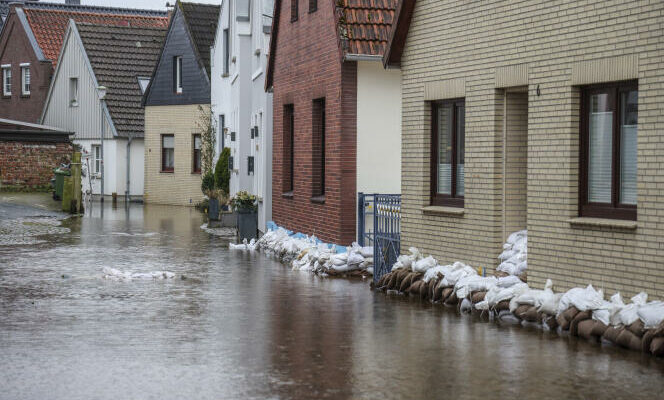The lull was short-lived. After three days of respite, the rain returned on Wednesday, January 3, to a large part of Germany already affected by significant flooding since Christmas Eve. Until then under control, the situation could become critical in several areas hit by this new rainy episode, which is expected to last until Saturday.
Located in the northwest of the country, the state of Lower Saxony is the most severely affected. In December 2023, precipitation reached 160 liters per square meter, unheard of since 1881, when the first records were recorded, and more than double what usually falls on average during the last month of the year. .
Thanks to the two million sandbags it has in reserve, the region has been able to cope with rising water levels so far. But the reserves are now exhausted, and a million and a half additional bags have been urgently transported from other Länder, while several dikes threaten to give way, notably around the town of Oldenburg, near the border with the Countries -Down.
Back to school postponed
In addition to Lower Saxony, other regions are affected: in North Rhine-Westphalia, Hesse, Saxony-Anhalt, Bavaria and Thuringia, many rivers have burst their banks, roads were closed to traffic, rail traffic was partially interrupted, and several municipalities decided to postpone the start of the school year for a few days. In the district of Mansfeld-Südharz (Saxony-Anhalt), where the chancellor, Olaf Scholz, is expected on Thursday, four days after having already visited another disaster region, elected officials requested help from the Bundeswehr. This could deploy around a hundred soldiers from the week of January 8.
While it is exceptional that such large portions of German territory are under water at the same time, these floods have nothing to do, in terms of severity, with those that hit the Rhineland in July 2021, causing the death of more than 180 people. Unlike what happened at the time, when torrential rains were concentrated in a few hours on a few particularly steep valleys, today it is plain regions which are affected: when the rivers and Rivers are in flood, so the water has more room to spread out, which it sometimes does for hundreds of meters on either side of the bed. In return, it rises less high and less quickly, which limits the damage.
You have 50% of this article left to read. The rest is reserved for subscribers.
